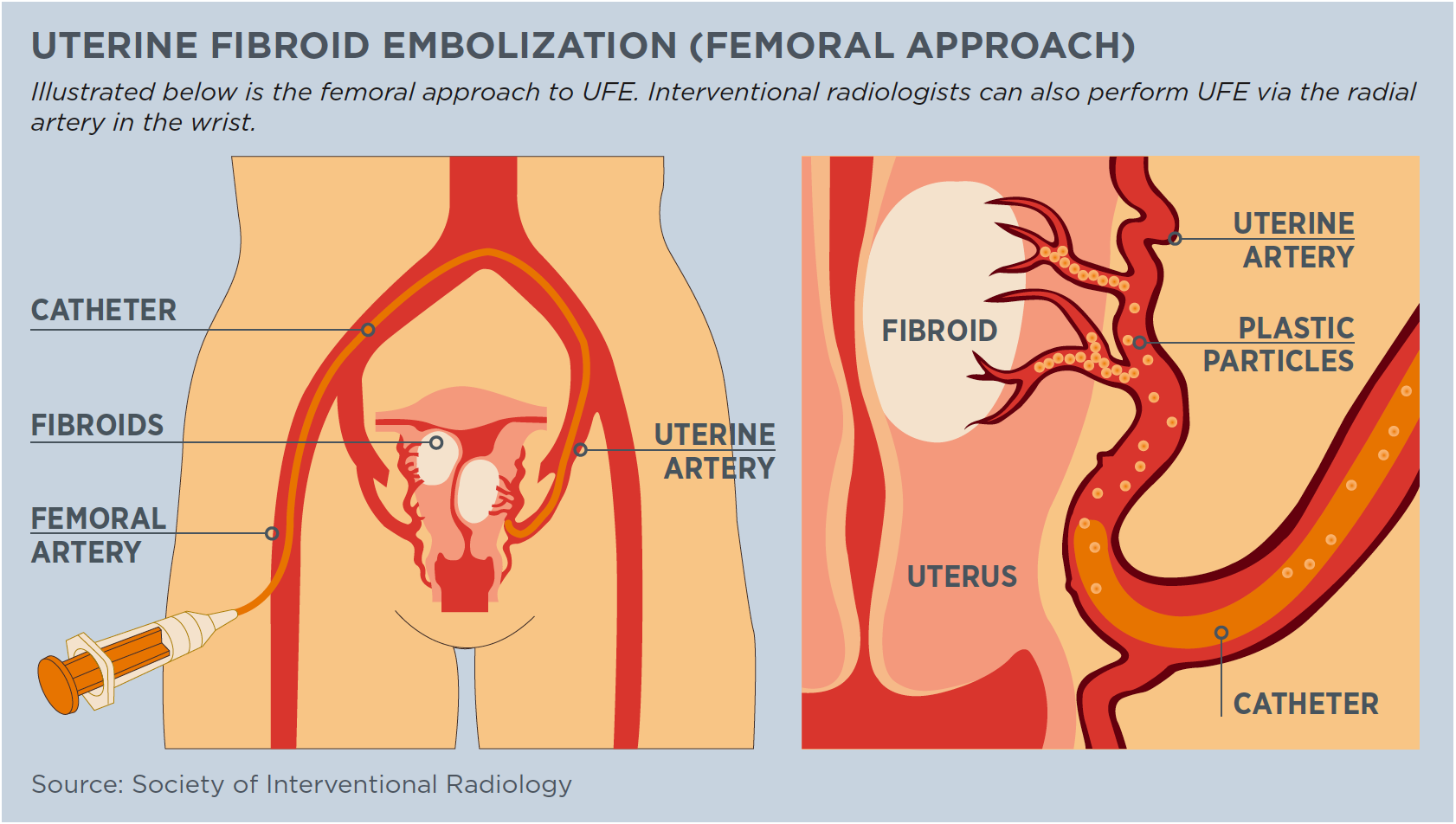SIR Survey Finds Most Women With Uterine Fibroids Are Not Informed of Minimally Invasive Treatments
Images

Among women diagnosed with uterine fibroids, more than half (53%) were presented with a hysterectomy, while fewer than 1 in 5 (20%) were presented with other less invasive options such as over-the-counter NSAIDs (19%), uterine fibroid embolization (17%), oral contraceptives (17%), and endometrial ablation (17%), according to new survey data by The Harris Poll on behalf of the Society of Interventional Radiology (SIR). Moreover, some women (17%) mistakenly think a hysterectomy, or complete removal of the uterus, is the only treatment option, including over 1 in 4 women aged 18–34 (27%).
The survey also demonstrates a lack of awareness among women regarding uterine fibroids. For instance, nearly three-fourths of women (72%) do not know they are at risk for developing uterine fibroids, yet up to 77% of adult women will develop fibroids at some point in their life. Fibroids also disproportionately affect women of color with Black women having the highest incidence.
“The survey findings, coupled with the low number of women who were offered a minimally invasive treatment like UFE, indicate that women are not being given all of the information they need to make their own healthcare decisions,” said John C. Lipman, MD, FSIR, founder and medical director of the Atlanta Fibroid Center and adviser for the report. “Not offering minimally invasive treatments like UFE in addition to the surgical treatment options is a significant oversight. Women need to be informed about the complete range of options available for treating their uterine fibroids; not just the surgical options as is most commonly done by gynecologists.”
The survey was conducted online within the US by The Harris Poll on behalf of SIR among more than 1,000 US women, including women who have personally been diagnosed with uterine fibroids. The data is a part of the report, The fibroid fix: What women need to know, which serves as a resource to inform women about minimally invasive treatment options for uterine fibroids, like uterine fibroid embolization (UFE).
UFE is a minimally invasive, image-guided, non-surgical, outpatient treatment that is performed by an interventional radiologist. It is less painful and has a shorter recovery period than surgical options. The treatment is often just as effective as other uterine fibroid treatments and doesn’t require the complete removal of the uterus. Even though several studies have noted the long-term efficacy of UFE, this survey shows that women are not learning about UFE from their doctors. Among women who have heard of or are familiar with UFE, only 2 in 5 (40%) first heard or learned about it from a healthcare provider.
The survey also found:
- More than half of women ages 18–34 (56%) and women ages 35–44 (51%) say they are not familiar with or never heard of uterine fibroids.
- 50% of Hispanic women say they’ve never heard of or aren’t familiar with uterine fibroids, compared to nearly 2 in 5 Black women (37%).
- 36% of Black women and 22% of Hispanic women mistakenly think they are not at risk for developing fibroids, yet uterine fibroids are three times more common in Black women and two times more common in Hispanic women.
- If women were looking for or choosing a treatment for uterine fibroids, the most important aspects would be that it cures the fibroids so they don’t recur (48%), and proven effectiveness (46%).
“The survey noted deep disparities in awareness and access regarding fibroids and fibroid treatments among Black and Hispanic women, who have a higher risk factor for developing uterine fibroids,” said Robert J. Lewandowski, MD, president of the Society of Interventional Radiology, and professor at Northwestern Medicine Feinberg School of Medicine. “The data serve as a guiding light for improving physician and patient educational efforts on various treatments to ensure all women, regardless of background, are informed about their risks and the full range of treatment options available.”
UFE is performed by inserting a thin catheter into an artery at the groin or wrist. The doctor guides the catheter to the fibroid’s blood supply where small particles, about the size of grains of sand, are released to block the blood vessels feeding the fibroid, depriving it of nutrients. As a result, the fibroid shrinks and dies. After treatment, women generally can leave the hospital the same day and be back to their normal activity in about one week. Studies show that a vast majority, nearly nine out of 10 patients who undergo uterine fibroid embolization, experience significant or complete resolution of their symptoms.
“Women suffering from fibroids are often given only one treatment option by their gynecologist, hysterectomy, without being informed of less invasive treatments, like UFE,” said Lipman. “Many patients don’t want a hysterectomy and they’re left to suffer in silence, even though their lives could be transformed back to normal if they only knew about UFE.”